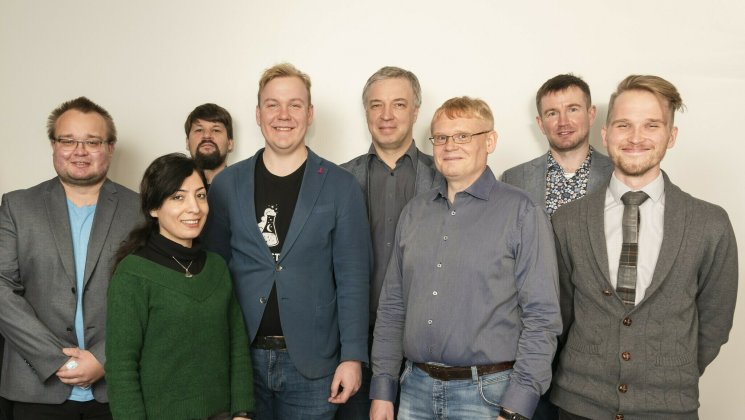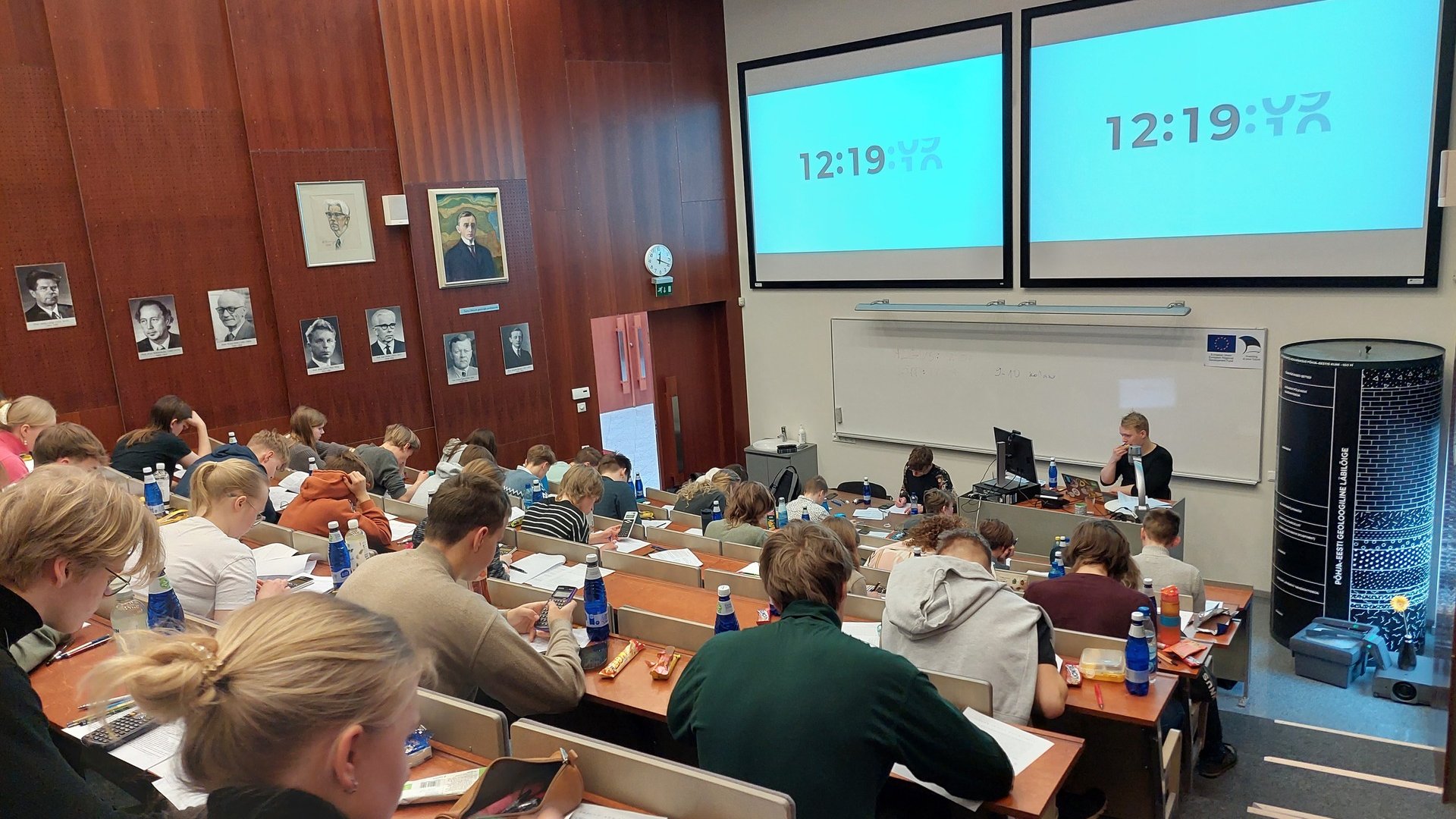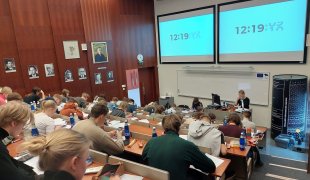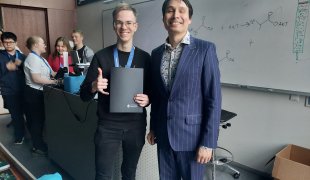-
Faculty of Arts and HumanitiesDean's Office, Faculty of Arts and HumanitiesJakobi 2, r 116-121 51005 Tartu linn, Tartu linn, Tartumaa EST0Institute of History and ArchaeologyJakobi 2 51005 Tartu linn, Tartu linn, Tartumaa EST0Institute of Estonian and General LinguisticsJakobi 2, IV korrus 51005 Tartu linn, Tartu linn, Tartumaa ESTInstitute of Philosophy and SemioticsJakobi 2, III korrus, ruumid 302-337 51005 Tartu linn, Tartu linn, Tartumaa EST0Institute of Cultural ResearchÜlikooli 16 51003 Tartu linn, Tartu linn, Tartumaa EST0Institute of Foreign Languages and CulturesLossi 3 51003 Tartu linn, Tartu linn, Tartumaa EST0School of Theology and Religious StudiesÜlikooli 18 50090 Tartu linn, Tartu linn, Tartumaa EST0Viljandi Culture AcademyPosti 1 71004 Viljandi linn, Viljandimaa EST0Professors emeritus, Faculty of Arts and Humanities0Associate Professors emeritus, Faculty of Arts and Humanities0Faculty of Social SciencesDean's Office, Faculty of Social SciencesLossi 36 51003 Tartu linn, Tartu linn, Tartumaa EST0Institute of EducationJakobi 5 51005 Tartu linn, Tartu linn, Tartumaa EST0Johan Skytte Institute of Political StudiesLossi 36, ruum 301 51003 Tartu linn, Tartu linn, Tartumaa EST0School of Economics and Business AdministrationNarva mnt 18 51009 Tartu linn, Tartu linn, Tartumaa EST0Institute of PsychologyNäituse 2 50409 Tartu linn, Tartu linn, Tartumaa EST0School of LawNäituse 20 - 324 50409 Tartu linn, Tartu linn, Tartumaa EST0Institute of Social StudiesLossi 36 51003 Tartu linn, Tartu linn, Tartumaa EST0Narva CollegeRaekoja plats 2 20307 Narva linn, Ida-Virumaa EST0Pärnu CollegeRingi 35 80012 Pärnu linn, Pärnu linn, Pärnumaa EST0Professors emeritus, Faculty of Social Sciences0associate Professors emeritus, Faculty of Social Sciences0Faculty of MedicineDean's Office, Faculty of MedicineRavila 19 50411 Tartu linn, Tartu linn, Tartumaa ESTInstitute of Biomedicine and Translational MedicineBiomeedikum, Ravila 19 50411 Tartu linn, Tartu linn, Tartumaa ESTInstitute of PharmacyNooruse 1 50411 Tartu linn, Tartu linn, Tartumaa ESTInstitute of DentistryL. Puusepa 1a 50406 Tartu linn, Tartu linn, Tartumaa ESTInstitute of Clinical MedicineL. Puusepa 8 50406 Tartu linn, Tartu linn, Tartumaa ESTInstitute of Family Medicine and Public HealthRavila 19 50411 Tartu linn, Tartu linn, Tartumaa ESTInstitute of Sport Sciences and PhysiotherapyUjula 4 51008 Tartu linn, Tartu linn, Tartumaa ESTprofessors emeritus, Faculty of Medicine0associate Professors emeritus, Faculty of Medicine0Faculty of Science and TechnologyDean's Office, Faculty of Science and TechnologyVanemuise 46 - 208 51003 Tartu linn, Tartu linn, Tartumaa ESTInstitute of Computer ScienceNarva mnt 18 51009 Tartu linn, Tartu linn, Tartumaa ESTInstitute of GenomicsRiia 23b/2 51010 Tartu linn, Tartu linn, Tartumaa ESTEstonian Marine Institute0Institute of PhysicsInstitute of ChemistryRavila 14a 50411 Tartu linn, Tartu linn, Tartumaa ESTInstitute of Mathematics and StatisticsNarva mnt 18 51009 Tartu linn, Tartu linn, Tartumaa EST0Institute of Molecular and Cell BiologyRiia 23, 23b - 134 51010 Tartu linn, Tartu linn, Tartumaa ESTTartu ObservatoryObservatooriumi 1 61602 Tõravere alevik, Nõo vald, Tartumaa EST0Institute of TechnologyNooruse 1 50411 Tartu linn, Tartu linn, Tartumaa ESTInstitute of Ecology and Earth SciencesJ. Liivi tn 2 50409 Tartu linn, Tartu linn, Tartumaa ESTprofessors emeritus, Faculty of Science and Technology0associate Professors emeritus, Faculty of Science and Technology0Area of Academic SecretaryHuman Resources OfficeÜlikooli 18, ruumid 302 ja 304 50090 Tartu linn, Tartu linn, Tartumaa EST0Area of Head of FinanceFinance Office0Area of Director of AdministrationInformation Technology Office0Administrative OfficeÜlikooli 17 (III korrus) 51005 Tartu linn, Tartu linn, Tartumaa EST0Estates Office0Marketing and Communication OfficeÜlikooli 18, ruumid 102, 104, 209, 210 50090 Tartu linn, Tartu linn, Tartumaa EST0Area of Vice Rector for Academic AffairsOffice of Academic AffairsUniversity of Tartu Youth AcademyUppsala 10 51003 Tartu linn, Tartu linn, Tartumaa ESTStudent Union OfficeÜlikooli 18b 51005 Tartu linn, Tartu linn, Tartumaa EST0Centre for Learning and TeachingArea of Vice Rector for ResearchUniversity of Tartu LibraryW. Struve 1 50091 Tartu linn, Tartu linn, Tartumaa ESTGrant OfficeArea of Vice Rector for DevelopmentCentre for Entrepreneurship and InnovationNarva mnt 18 51009 Tartu linn, Tartu linn, Tartumaa EST0University of Tartu Natural History Museum and Botanical GardenVanemuise 46 51003 Tartu linn, Tartu linn, Tartumaa EST0International Cooperation and Protocol Office0University of Tartu MuseumLossi 25 51003 Tartu linn, Tartu linn, Tartumaa EST0Area of RectorRector's Strategy OfficeInternal Audit Office
The Chemistry of Success: Inside the 71st Chemistry Olympiad Finals
The finals of the 71st Estonian Chemistry Olympiad took place at the University of Tartu's Chemicum on March 16-17, inviting students who excelled in the regional rounds and the open chemistry competition. This year, 97 students from grades 9 to 12 competed against each other. The opening remarks were delivered by the new Director of the Institute of Chemistry, Piret Pikma, who encouraged young people to study chemistry.
In the 9th and 10th grade category, a total of 50 students participated, tasked with solving six out of nine specialized competition problems. Students were particularly interested in identifying iodine compounds, determining the caffeine content spectrophotometrically in coffee, exploring the chemical properties of special boron compounds, and proving the hydrolysis product of the sweetener aspartame. Interestingly, the most successfully solved problems in both 9th and 10th grades were related to iodine compounds and boron compounds (with over 80% solution rate for both). It was noted that the most challenging and less popular task was determining water content using the Karl-Fischer titration method, with a solution rate of less than 40% in both grades.

The graph shows students' feedback on the pleasantness of the tasks, with one of the most enjoyable tasks being about pool water.
The set for 11th and 12th grades consisted of six tasks, offering students exciting challenges from various chemistry domains. Responding to students' strong desire for more organic chemistry tasks in the past two years, the authors included five out of six different aspects of organic chemistry this year. The most enjoyable task for the older group focused on the laboratory synthesis of a natural compound found in chrysanthemums, followed by an introductory task on solubility products. Tasks on supramolecular chemistry and the synthesis of two well-known iodine-based oxidizing reagents, sodium periodate and Dess-Martin periodinane, also received excellent feedback. However, the most challenging task proved to be the computationally intensive "Biodiesel Production".

Overall, this year's tasks were found to be easier and more enjoyable than average: the solution rate was 51% for the 11th grade and as high as 63% for the 12th grade! Notably, in the 12th grade category, all top four spots were occupied by girls (Liisa Pata, Lisette-Liis Loorits, Anette Kipso, and Ulla Inger Veri), which is reportedly the first occurrence in the history of the chemistry olympiad, undoubtedly an encouraging event for young female chemistry enthusiasts. It's also worth mentioning that in five tasks, at least one student managed to score the maximum points, which is a significant achievement considering the difficulty level of the finals.
The winners of this year's chemistry olympiad by grade are as follows:
9th Grade: Karl_Robin Koppel, Gustav Adolfi Gümnaasium (teacher Katrin Soika);
10th Grade: Kaarel Toomet, Nõo Reaalgümnaasium (teacher Aivar Vinne);
11th Grade: Karlis Suvi, Tallinna Reaalkool (teacher Andrus Kangro).
12th Grade: Liisa Pata, Tallinna Reaalkool (teacher Martin Saar);
It's worth mentioning that Kaarel Toomet, Karlis Suvi, and Liisa Pata also won the finals last year.
Complete results along with tasks and solutions can be found on the University of Tartu Science School's website.
The chemistry olympiad was funded by the Ministry of Education and Research and organized by the University of Tartu Science School in collaboration with the Institute of Chemistry. The olympiad was also supported by Professor Nadežda Kongi, who provided her brand's Ontic minerals souvenirs to the girls."

University brings top professionals and future technologies to Ida-Viru County
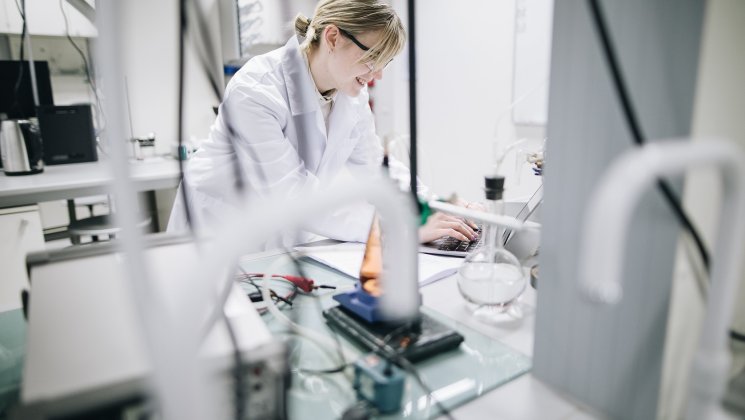
A new approach has the potential to double the efficiency of energy storage devices.
